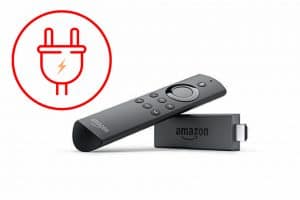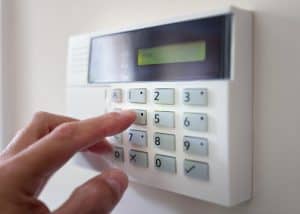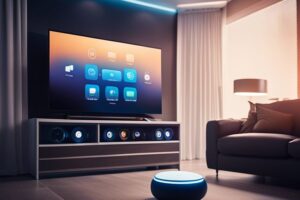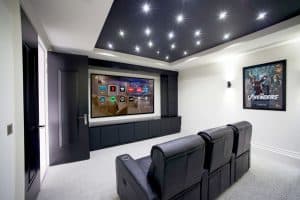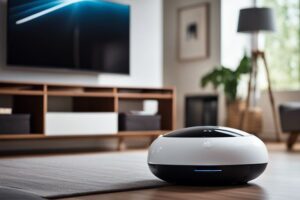Are you looking for ways to make daily tasks easier and safer for yourself or a loved one who is elderly or disabled? Smart home devices can provide invaluable assistance in maintaining independence and ensuring safety at home. From voice-activated assistants to remote-controlled appliances, there are a wide range of beneficial devices that can be easily integrated into your home to make life more manageable. In this guide, we will provide you with practical tips on how to select, set up, and use smart home devices to improve the quality of life for elderly or disabled individuals.
Key Takeaways:
- Customised Voice Control: Smart home devices can be set up to respond to custom voice commands, allowing elderly or disabled individuals to control their environment with ease.
- Remote Monitoring: Caregivers or family members can remotely monitor the well-being of elderly or disabled individuals through smart home devices, providing peace of mind and immediate assistance if needed.
- Fall Detection and Emergency Response: Smart home devices can be programmed to detect falls and automatically alert emergency services or designated contacts, ensuring quick assistance in critical situations.
- Automatic Home Adjustments: Smart home devices can automatically adjust lighting, temperature, and other environmental factors based on the individual’s preferences and needs, enhancing comfort and safety within the home.
- Integration with Medical Devices: Smart home devices can be integrated with medical monitoring equipment, allowing continuous tracking of vital signs and medical conditions, as well as providing alerts in case of irregularities.
Selecting the Right Smart Home Devices
When it comes to choosing the right smart home devices for elderly or disabled individuals, it’s important to consider their specific needs and challenges. For a comprehensive guide on smart home technology suited for the disabled and elderly, you can refer to the Guide to Smart Home Technology for the Disabled and Elderly.
Factors to Consider Before Making a Purchase
Before making a purchase, there are several factors to consider to ensure that the smart home devices you choose are suitable for the elderly or disabled. Some key factors to take into account include the individual’s specific needs, the level of ease of use of the device, its compatibility with other devices, and whether it offers voice control capabilities. The cost and ongoing support services for the device are also important considerations. The ability to integrate with an emergency response system is another vital factor to bear in mind. The compatibility with existing smart home infrastructure and the potential for remote access will impact the effectiveness of the device. The ability to customise the device to suit individual needs is also vital. Take all of these factors into account to ensure that you choose the most appropriate devices.
Tips for Choosing User-Friendly Devices for Individuals with Special Needs
When selecting smart home devices for individuals with special needs, it’s crucial to focus on user-friendly options. Look for devices with intuitive interfaces, adaptable settings, and clear instructions. Ensure that the devices offer compatibility with assistive technologies such as screen readers or braille displays, if needed. Knowing which devices offer personalisation options and flexible configurations will help you select those that best suit the individual’s needs and preferences. You can also consider devices with voice recognition and voice control features to provide hands-free operation. Look for options with remote access capabilities to allow for monitoring and control from anywhere. By considering these tips, you can ensure that the devices you choose are user-friendly and cater to specific needs.
Setting Up Your Smart Home System
Now that you’ve decided to implement smart home devices to enhance the living experience for yourself or a loved one, the first step is to set up the smart home system in your living space.
Step-by-Step Guide to Installation and Setup
When setting up your smart home system, it’s important to ensure that the process is as seamless as possible. Here’s a step-by-step guide to help you through the installation and setup:
| Step 1: | Choose a central hub for your smart devices, ensuring it’s compatible with various brands and types of devices. |
| Step 2: | Connect the hub to your Wi-Fi network to enable communication between devices. |
| Step 3: | Install and set up your individual smart devices, following the manufacturer’s instructions carefully. |
| Step 4: | Download and install the corresponding mobile apps to control and monitor your smart home system. |
How-to Personalize Settings for Accessibility and Comfort
Once your smart home system is set up, it’s crucial to personalise the settings to cater to the specific accessibility and comfort needs of the elderly or disabled individual. Here’s how you can personalise the settings:
Use voice commands to control devices, such as turning on lights or adjusting the thermostat, to make the system more accessible and convenient.
Incorporate customised routines or schedules to automate tasks based on the user’s daily activities and preferences.
As technology continues to advance, smart home devices have become increasingly popular for their ability to make daily tasks more convenient and accessible for elderly or disabled individuals. In this blog post, we will explore how to maximise the use of smart home devices to improve the quality of life for those in need.
Maximising the Use of Smart Home Devices
When it comes to maximising the use of smart home devices for elderly or disabled individuals, there are various ways to make the most out of these technologies. Whether it’s integrating smart devices into your daily routines or combining assistive devices with smart home technology, there are several strategies to help you live more independently and comfortably.
Daily Routines and How Smart Devices Can Assist
Smart home devices can greatly assist you in your daily routines. For example, voice-activated assistants such as Amazon Echo or Google Home can be used to set reminders for medication, schedule appointments, or even control smart appliances. Additionally, smart lighting and thermostat systems can be programmed to automatically adjust to your preferences, making it easier and safer to navigate around your home.
Integrating Assistive Devices with Smart Home Technology for Increased Independence
Integrating assistive devices with smart home technology can significantly increase your independence. For instance, you can connect your mobility aids such as wheelchairs or walkers to smart sensors and alarms to monitor your movements and receive alerts in case of any irregularities. This can provide peace of mind for both you and your caregivers, ensuring that you are safe and well taken care of.
Troubleshooting and Maintenance
Smart home devices are designed to make life easier for you, but like any technology, they can sometimes encounter problems. Regular maintenance and troubleshooting can help to ensure that your smart home devices continue to operate smoothly and reliably. If you encounter any issues, it’s essential to address them promptly to maintain the functionality of these devices. To learn more about how smart home technology can be integrated to support the elderly and disabled, you can visit How can smart home technology be integrated to support the elderly and disabled?
Tips for Regular Maintenance to Ensure Reliability
When it comes to maintaining your smart home devices, regular attention is crucial. Here are some key tips to ensure the reliability of your devices:
- Perform routine checks: Regularly inspect your smart home devices for any signs of wear and tear.
- Keep devices updated: Ensure that all software and firmware updates are installed to keep your devices running smoothly.
- Replace batteries: For devices that use batteries, be sure to replace them as needed to prevent any disruptions in functionality.
- Follow manufacturer’s guidelines: Always refer to the manufacturer’s instructions for maintenance and care of your smart home devices.
Any neglect in regular maintenance can lead to potential issues with your smart home devices, impacting their overall performance and reliability.
Solving Common Issues: A How-To Guide for Non-Tech-Savvy Users
It’s common for users to encounter technical issues with their smart home devices. If you find yourself facing a problem, it’s important to know how to troubleshoot effectively. Here are some basic steps you can take:
- Check power sources: Ensure that the device is properly connected to a power source and that the power outlet is functional.
- Reset the device: Sometimes a simple reset can resolve minor issues. Follow the manufacturer’s instructions for resetting your device.
- Contact customer support: If you are unable to resolve the issue on your own, don’t hesitate to reach out to the manufacturer’s customer support for assistance.
By following these steps, you can address common issues without the need for extensive technical knowledge, ensuring that your smart home devices remain functional and beneficial to you.
Conclusion: How to Use Smart Home Devices for Elderly or Disabled Individuals
Considering all points, it is evident that smart home devices can greatly benefit elderly or disabled individuals by providing them with greater independence, safety, and ease of living. By incorporating smart devices such as voice-controlled assistants, automated lighting, and motion sensors, you can create a more accessible and comfortable home environment tailored to your specific needs. Additionally, these devices can also provide peace of mind for caregivers and loved ones by allowing for remote monitoring and assistance. It is important to carefully consider the individual requirements and preferences of the person in question when selecting and implementing smart home technology, ensuring that it truly enhances their quality of life.
FAQ
Q: What are smart home devices for elderly or disabled individuals?
A: Smart home devices are gadgets and systems that can be controlled remotely, automatically, or through voice commands, helping elderly or disabled individuals perform daily tasks and stay independent.
Q: What types of smart home devices are available for elderly or disabled individuals?
A: There are various types of smart home devices available, including smart lighting, smart thermostats, smart locks, smart doorbells, voice assistants, home monitoring systems, and medical alert systems.
Q: How can smart home devices benefit elderly or disabled individuals?
A: Smart home devices can benefit elderly or disabled individuals by providing convenience, security, and peace of mind. They can also help with mobility and accessibility, allowing individuals to control their home environment more easily.
Q: How can elderly or disabled individuals use smart home devices?
A: Elderly or disabled individuals can use smart home devices through voice commands, smartphone apps, or remote controls. Many devices are also compatible with assistive technologies, making them accessible for a wide range of users.
Q: What should elderly or disabled individuals consider when using smart home devices?
A: When using smart home devices, elderly or disabled individuals should consider factors such as ease of use, compatibility with existing home systems, privacy and security features, as well as the ongoing costs of maintaining and operating the devices.


